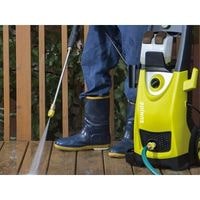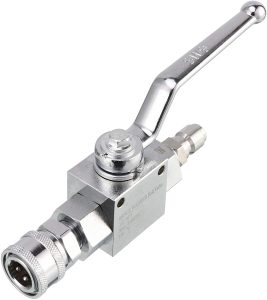Top Reasons Why A Pressure Washer Is Leaking Water. Top Reasons Why A Pressure Washer Is Leaking Water.
If the pressure washer is leaking water directly from the pump, try not to panic. While there doesn’t necessarily need to be any noticeable damage on the pump, it may be useful to take a closer look at the internal machinery.
There are pistons inside of the pump that create extreme pressure and force water up through the intake and out into your nozzle.
If they’re worn or damaged, you should replace them before attempting to use the cleaner again.
Top Reasons Why A Pressure Washer Is Leaking Water

Water leaks are caused when the clear adapter isn’t seated properly.
This usually occurs due to the fact that water builds up by the threads and then is projected over the unit’s case.
If this happens, it’ll obviously most likely be a mess but it would also limit one from using their appliance how they want to.
Pressure Washer Parts To Fix Leaks
Trigger handle and hose O-ring. When the handle of a sprayer is leaking, it might need to be replaced.
The O-ring goes between the sprayer’s mechanism and the handle, which means that replacing both may not be necessary.
However, it’s just as important to make sure the O-rings on either end of the hose also aren’t damaged as otherwise, all your efforts could possibly have been in vain.
Hoses With High Pressure
Ensure that your inlet pipe and spray gun are connected only to a dedicated, high-pressure hose.
Hoses should have a higher pressure rating than the pump; electric models have units of 1,300-1,700 psi, while gas-powered pumps are typically rated at 2,000-3,200 psi. The pressure rating of a hose can be lowered to prevent damage and leaking.
O-rings, Plungers, Check Valves

When utilizing some pumps, it is possible to purchase only certain parts of the pump separately in order to repair the pump.
In this case, you may be able to purchase a separate check valve, plunger, and O-rings.
Pump Failure
If you don’t purge the air out of your pump before using it, the air can jam up against the check valve because there isn’t enough room for water and air to go through at once.
It can damage other parts of your pump that force its plunger down, like the unloader piston. This will cause your pump to malfunction and could lead to a leak in your system.
Thermostatic Release Valve
While it is expected that the thermal release valve will discharge water periodically, if it is continually emitting water then it may be defective and need to be replaced.
Related Guide
